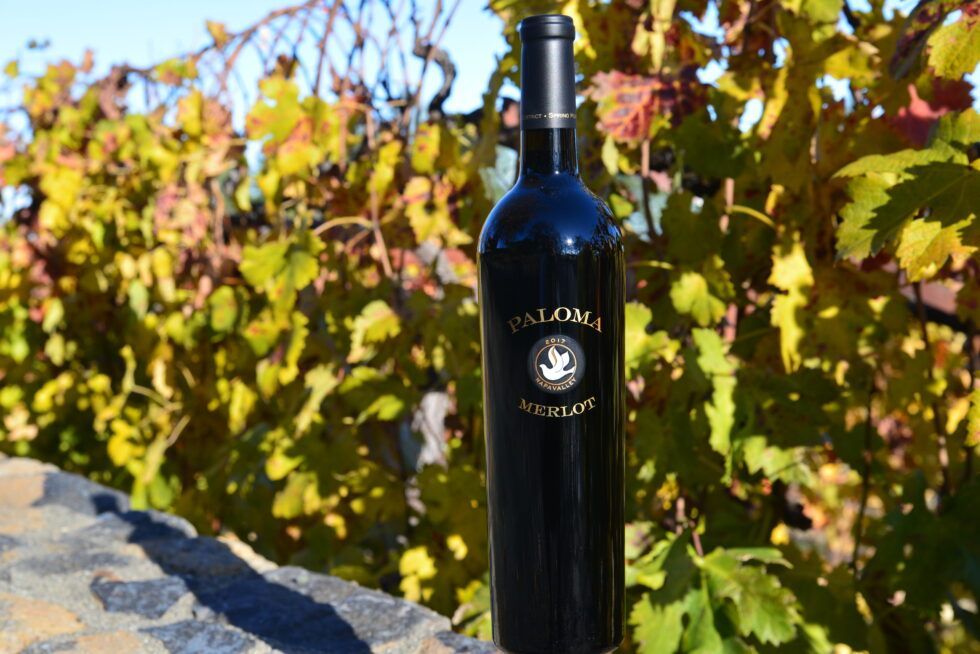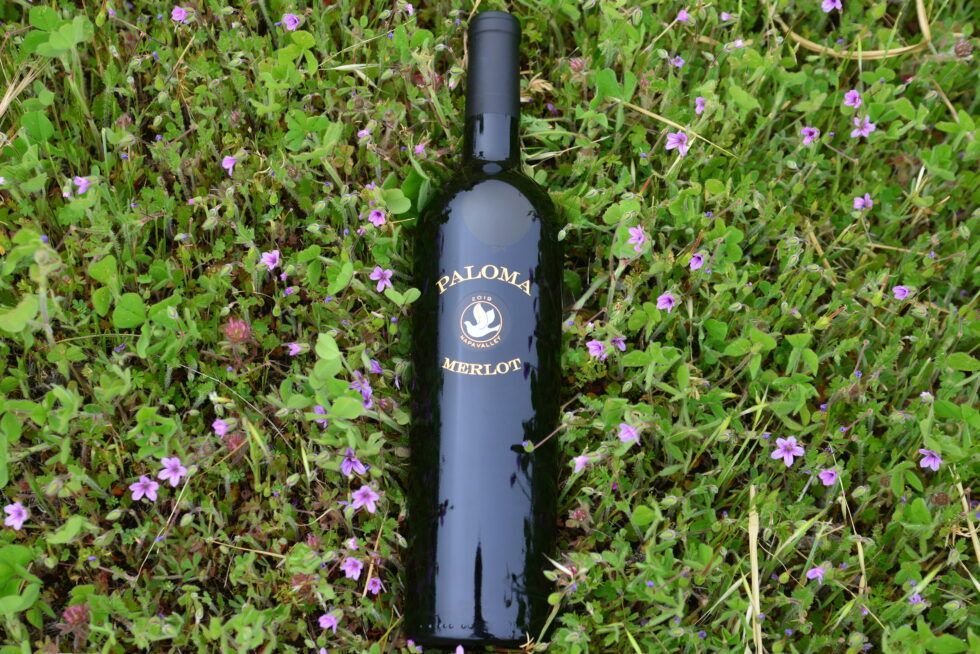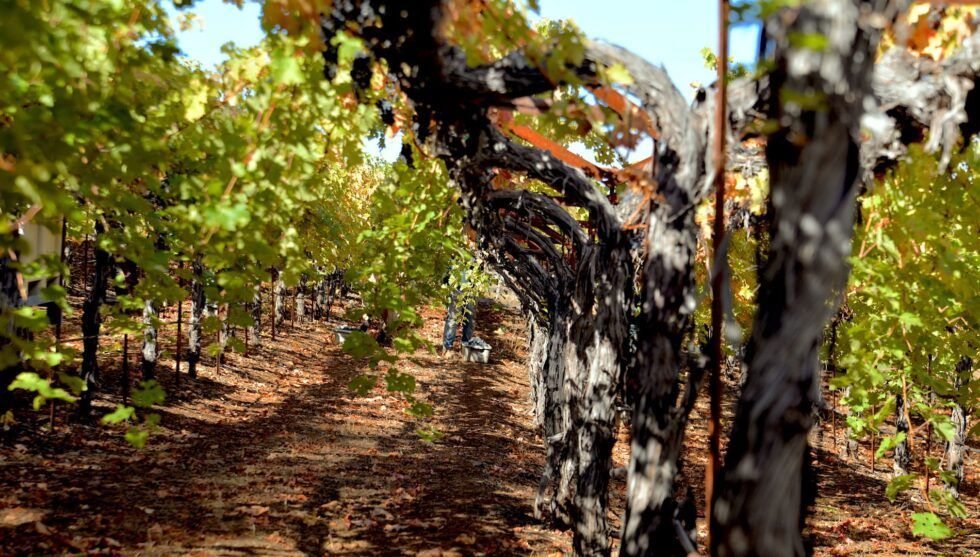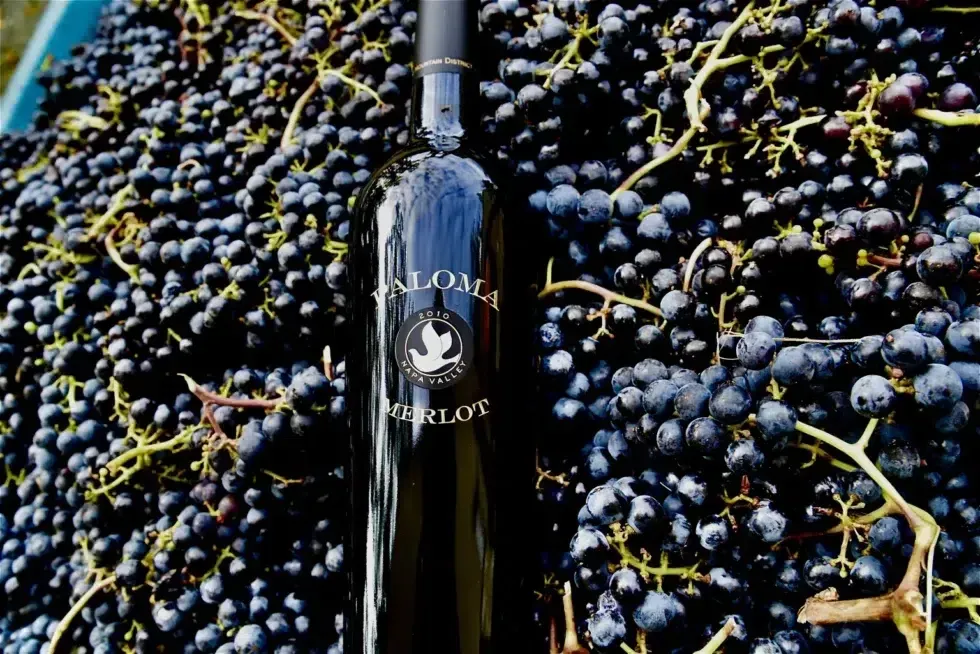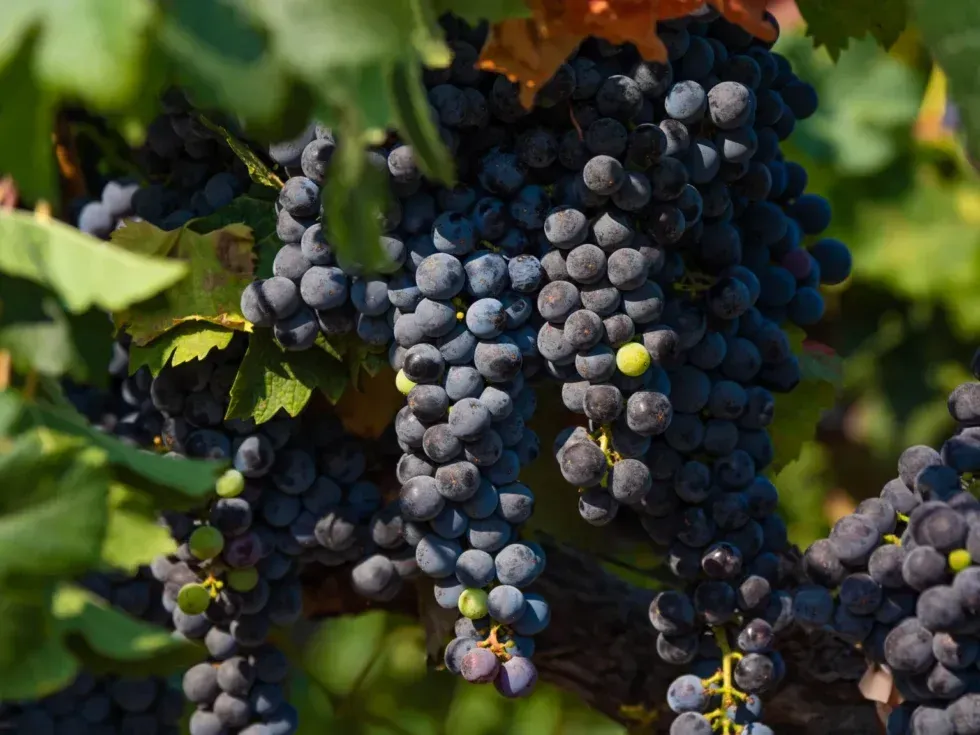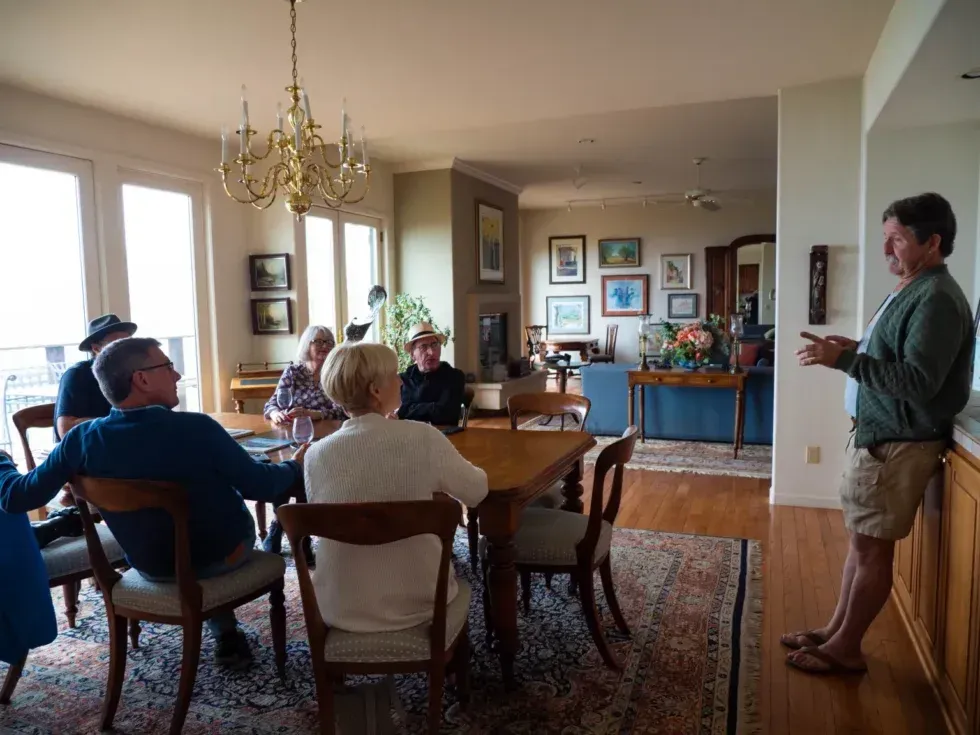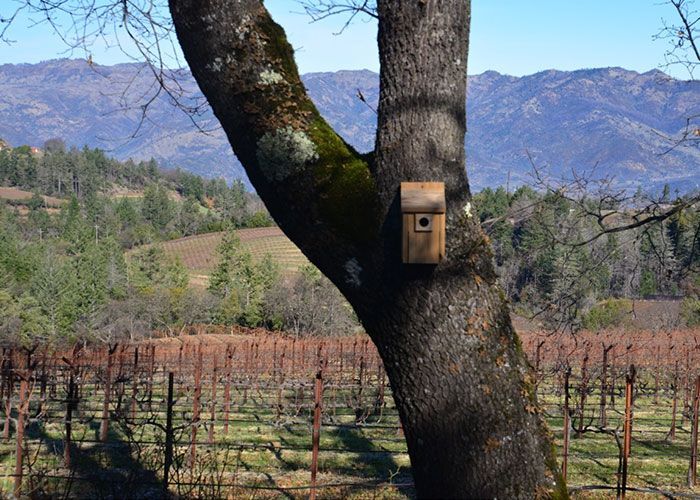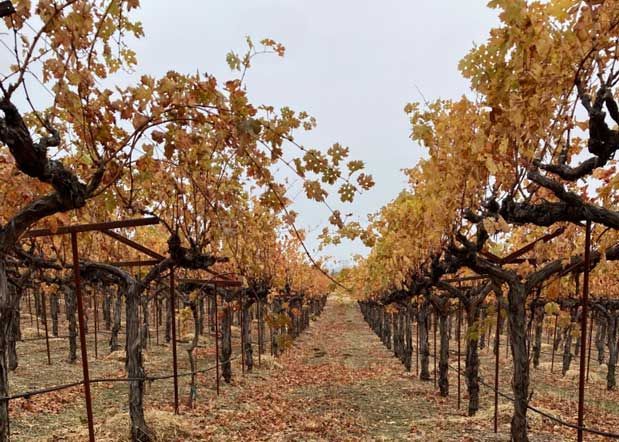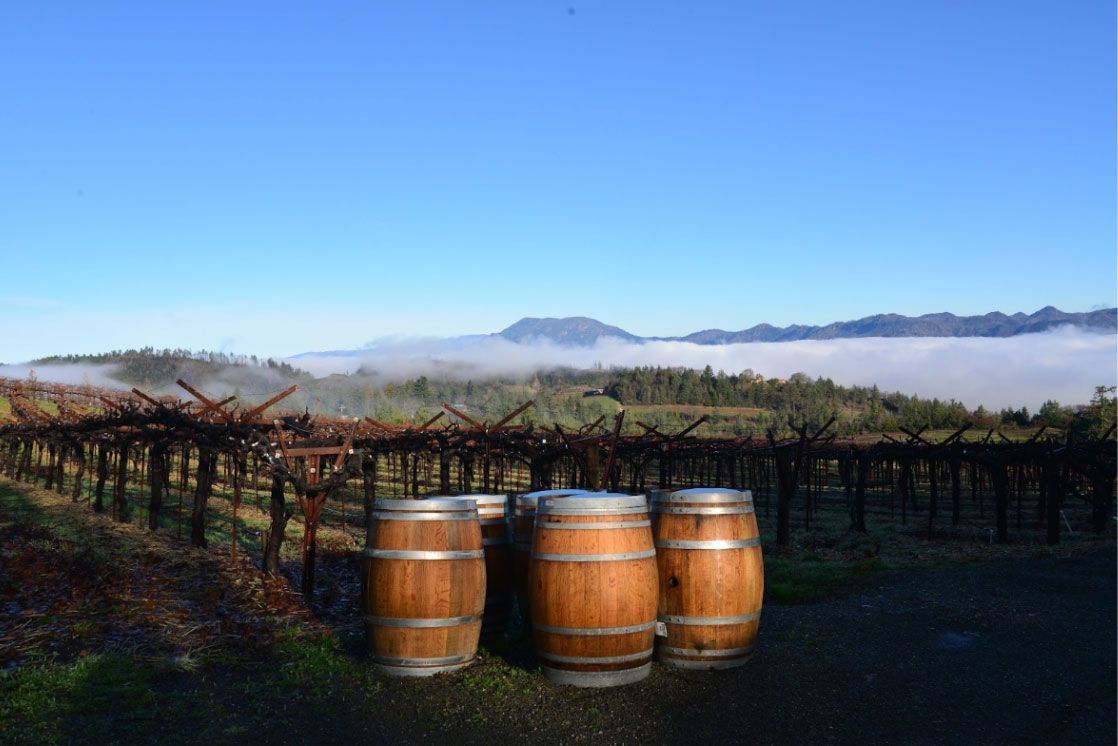The 5 “S’s” of Wine Tasting: Beginning steps to Wine Tasting
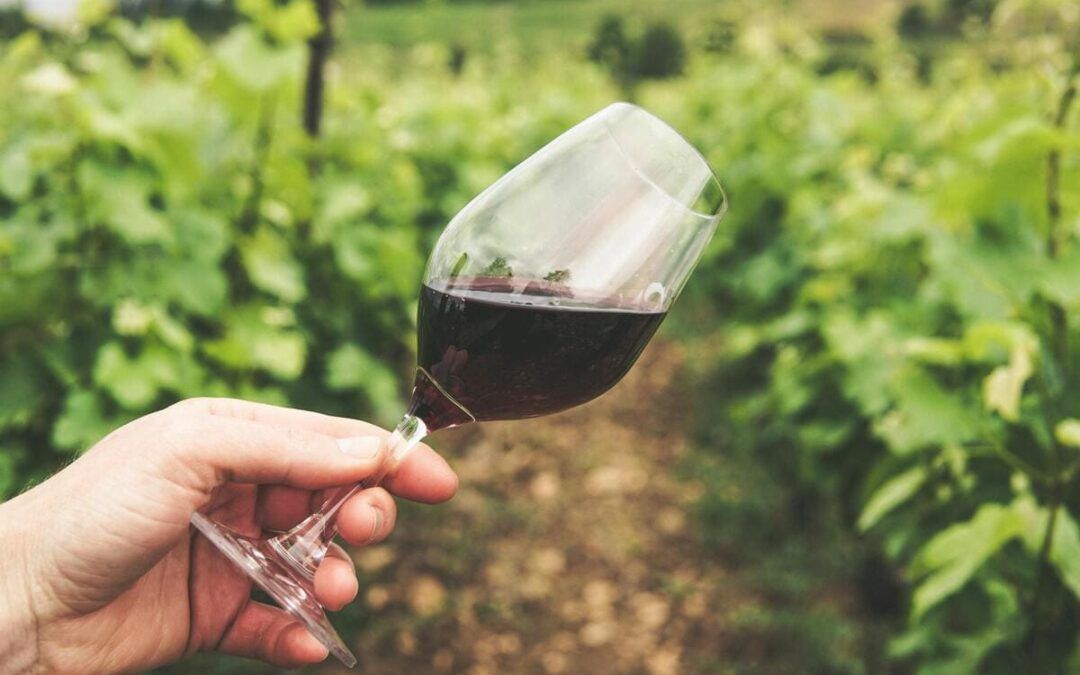
Ever wonder why people talk about aromatics in wine? They're playing a game of discovery. This game isn't about changing whether you like a wine or not; your personal preference is what matters most. It’s about learning why you like a wine! By learning to appreciate the subtleties of wine, you can better understand what kinds you enjoy. So, we invite you to explore wine with the "5 S's" game.
See
The color of wine can actually give you clues about wine age, potential grape variety, and winemaking quality.
For example young white wines tend to be pale yellow or greenish, while older whites can turn gold or amber. Young red wines usually exhibit bright red, purple, or ruby hues, whereas older reds can develop garnet or brownish tones. Next look for the clarity of the wine. A clear wine indicates it was well-made and has gone through some form of filtration process like racking, while a hazy or cloudy appearance might suggest a fault or an unfiltered, natural wine.
Swirl
Before you swirl, briefly smell the wine. When you swirl wine you are observing 2 things: viscosity (thickness of the wine) and aroma. It is a joy to experience the change of aromatics before and after a vicious swirl.
Swirl the wine and observe the "legs" or "tears" that form on the side of the glass. These drips give a brief indication if the wine is a higher or lower alcohol. Higher viscosity wine (meaning the drips are closer together) indicate a higher alcohol content or depending on the type of wine, like a Riesling, it can also indicate residual sugar.
What swirling does is introduce more oxygen to the wine, which agitates the molecules in the glass and exposes the volatile compounds, enhancing the wine’s aromas. This is also known as aerating the wine. The best technique is to hold the base of the glass on a flat surface and move it in a circular motion. With practice, you can swirl the wine in the air and not spill.
Tip: Placing your palm over the top of the wine glass while you do this is recommended if you are not the strongest smeller.
Sniff the Aroma
After swirling, take a series of short sniffs rather than a long inhale. This prevents your nose from becoming desensitized to the aromas. The most common question is what are you looking for? Like perfume, try to discover it in three layers.
The primary aromatic should be some kind of fruit, floral, or herbaceous characteristic; these aromatics indicate the growing site.
The secondary aromatics in the glass indicate winemaking choices; like oak barrel vanilla, spice, tobacco, or dried aromatics.
And lastly, tertiary aromatics like candied, jam in a jar, and dried flavors represent age. Memory and experience are required to test these discoveries; there is no substitute for practice.
Sip
Now on to taste. Pay attention to your first and second impressions as the wine enters your mouth. This is where acid and tannin are most noticeable.
Acid: If you salivate, the wine is higher in acid.
Tannin: If it dries out your entire mouth, the wine is higher in tannins.
Focus on the texture or weight of the wine in your mouth. Does it feel heavy like a gulp or light and easy to drink? These elements can indicate the winemaking style and the varietal.
Next, consider the finish. After you swallow, does the flavor linger? For how long? This is a big personal preference when enjoying wine and food together. If you prefer the wine and food flavors separate, try asking for a wine with a short finish at a restaurant or wine store. If you like the wine flavor to linger with your food, choose a wine with a long you’ll want a longer finish. Choosing the right wine can really change your dining experience.
Savor
Most importantly, is it complex? A wine is considered complex, generally speaking, if it has a minimum of three distinct aromatic characteristics. This can be aromatics that come from the primary, secondary, and tertiary. A wine that smells like dried plums, vanilla, and jasmine would be considered complex.
Complexity lends to ageability because those complex flavors will fall away slower over time in the bottle. Does one flavor stand out more than the other? Are each of the elements—acid, tannin, mouth-feel, and fruit—working together? Are they in balance with each other? If all those elements are in balance with each other working harmoniously, the wines’ shelf life grows.
So, after working through the five S’s, consider whether you like the wine. What elements stand out to you? How does it compare to other wines you’ve tasted? By paying attention to these details, you can gain a stronger understanding of what you like about wine and a deeper appreciation for its nuances. This game can help you learn what wines you truly love, and maybe with time, why you love them. What matters most is what you enjoy!
Living onsite at Paloma affords Sheldon the opportunity to know exactly when the grapes in our fourteen acre vineyard are ripe.
So the“sweet” fruit flavor a person tastes is really evidence of our picking choices for that growing year. Whether you like a wine that tastes, as we say in wine language, fruit forward, is completely up to you. Again, wine tasting is subjective. If you are listening in on a tasting at Paloma, you are likely to hear Sheldon mention that the flavors you smell and taste are what you see in your mind's eye.
